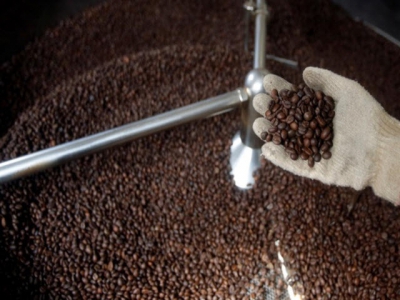Japanese take to Vietnamese coffee

Japan has increased its imports of Vietnamese coffee thanks to low prices and the geographic proximity between the two countries.
A man checks roasted coffee beans at a factory in Hanoi, Vietnam. Photo by Reuters/Kham
In January-November 2018 its imports rose by 15 percent to 94,000 tons, according to the Nikkei Asian Review.
The world’s second biggest coffee producer in fact accounted for 25 percent of Japan's imported, compared with 27 percent from market leader Brazil, which saw its exports to Japan fall by 7 percent.
Vietnam mostly produces the robusta variety of coffee, which is somewhat bitter compared to Brazil's arabica.
Industry insiders said Japanese consumers’ preference for good tasting, low-priced coffee is driving robusta's market share there. Robusta beans are currently trading at around 68 cents per pound, more than 30 percent lower than arabica’s $1.03.
Besides, from Vietnam and other regional countries only takes about half as long as from Latin America, which accentuates the price difference.
Last year Vietnam exported 1.89 million tons of coffee worth $3.5 billion, up 20.1 percent in volume and 1.2 percent in value from 2017, according to the General Statistics Office. Its largest markets were Germany, the U.S., Italy, Spain, and Japan.
The country’s coffee output might fall by 20 percent this year because of low water levels and the threat of a drought in its main coffee-growing region, the Vietnam Coffee and Cacao Association has warned.
Có thể bạn quan tâm
 Vietnamese mangoes on the go: US licenses imports
Vietnamese mangoes on the go: US licenses imports Mangoes will join litchi, longan, rambutan, star apple and dragon fruit on US supermarket shelves, positioning the US as the 40th export market for Vietnamese
 The sustainable development of fruit trees in southern provinces
The sustainable development of fruit trees in southern provinces At this time, there are 14 types of fruit in the south with a large area of over 10,000 ha/type, of which the largest is the mango area (80,000 ha)
 Southern provinces replace crops on ineffective rice growing area
Southern provinces replace crops on ineffective rice growing area Particularly, Southern provinces had switched to cultivate fast-growing crops, such as corns, peanuts, soy beans and vegetables, and fruit trees